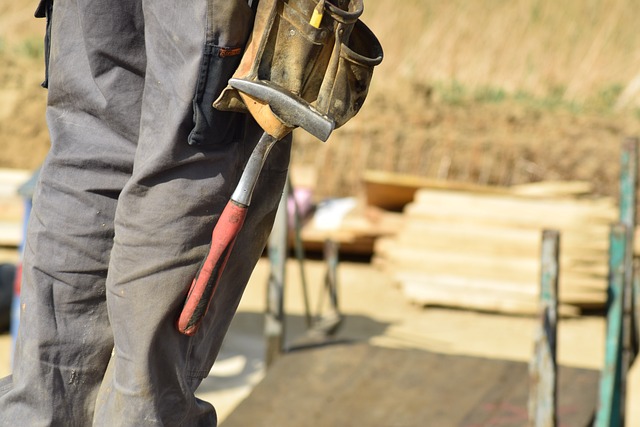Construction projects can be complex, juggling budgets, timelines, and a whole lot of paperwork. If you’re facing difficulties with contractors and wondering about health and safety regulations, you might have stumbled upon the term CDM. But what exactly is it, and when does it apply? Here at Blackstone Solicitors, we’ll break down the essentials of CDM regulations in a way that’s clear and easy to understand.
Free Initial Telephone Discussion
For a free initial discussion with a member of our New Enquiries Team, get in touch with us today. We are experienced in dealing with all the legal aspects of CDM Regulations, and once instructed, we will review your situation and discuss the options open to you in a clear and approachable manner. Early expert legal assistance can help ensure you are on the best possible footing from the start and also avoid the stress of dealing with these issues on your own. Simply call us on 0345 901 0445 or click here to make a free enquiry and a member of the team will get back to you.
What is CDM?
CDM stands for the Construction (Design and Management) Regulations 2015. Think of it as a set of rules that ensure everyone involved in a construction project works together to prioritize health and safety. It applies throughout the entire lifecycle of a project, from the initial design stage to the final handover.
Does CDM Apply to My Project?
The good news? CDM applies to almost every construction project in England and Wales. Here’s the key takeaway: size doesn’t matter. Whether you’re building a new extension, renovating your kitchen, or undertaking a large-scale commercial development, CDM is likely relevant.
Here are some common scenarios where CDM applies:
- New builds: From houses to office blocks, CDM is there to ensure everyone involved considers health and safety risks from the very beginning.
- Refurbishments: Whether it’s a bathroom remodel or a complete office overhaul, CDM highlights the importance of managing health and safety risks during renovations.
- Extensions: Adding an extra room might seem simple, but CDM reminds everyone involved to prioritize health and safety throughout the project.
- Demolition: Tearing down a building comes with inherent risks. CDM ensures everyone involved understands and manages these hazards.
- Maintenance: Even routine maintenance activities can pose safety risks. CDM emphasizes the importance of planning and risk assessment for even seemingly simple tasks.
Who Does CDM Apply To?
So, if CDM applies to pretty much every project, who exactly needs to follow these regulations? Here’s a breakdown of the key players:
- The Client: This is you, the person or organisation commissioning the construction work. While you might not be directly involved in the building process, CDM places some responsibility on your shoulders to ensure everyone involved manages health and safety risks.
- The Principal Designer: This is the person responsible for the pre-construction phase, planning and designing the project with health and safety in mind. The principal designer might be an architect, engineer, or another qualified professional.
- The Principal Contractor: Once the project moves into the construction phase, the principal contractor takes the reins, overseeing the construction work and ensuring a safe working environment.
Here’s the important thing: Don’t panic if you’re unsure who these roles are on your project. Blackstone Solicitors can help you navigate these responsibilities and ensure everyone involved understands their CDM duties.
What Does CDM Involve?
Now that we know who’s involved, let’s explore what CDM actually entails. Here are some key aspects:
- Pre-construction Planning: Before any building work starts, a health and safety plan needs to be created. This plan should identify potential risks, outline how these risks will be managed, and ensure everyone involved is aware of their responsibilities.
- Risk Assessment: A crucial part of the CDM process is identifying potential hazards throughout the project lifecycle. This allows for proactive measures to be put in place to minimize risks and keep everyone safe.
- Communication and Cooperation: CDM emphasizes the importance of clear communication and collaboration between all parties involved in the project. Everyone needs to be aware of their roles and responsibilities when it comes to health and safety.
- Information Sharing: Relevant health and safety information needs to be shared throughout the project. This ensures everyone involved has the knowledge they need to work safely.
What Happens if CDM Isn’t Followed?
If CDM regulations are breached, there can be serious consequences. Here’s what you need to be aware of:
- Fines: The Health and Safety Executive (HSE) can issue fines for breaches of CDM regulations. These fines can be substantial, impacting both the client and those carrying out the construction work.
- Prosecution: In serious cases, individuals or companies can be prosecuted for breaches of CDM regulations. This could result in criminal charges and potentially even imprisonment.
- Project Delays: Failure to comply with CDM can lead to project delays as work might need to be stopped to address safety concerns.
How We Can Help
We have a proven track record of helping clients deal with CDM regulations. We will guide you diligently and ensure all checks are carried out swiftly and efficiently and we firmly believe that with the right solicitors by your side, the entire process will seem more manageable and far less daunting. You can read more about the range of construction law services we offer by clicking here: https://blackstonesolicitorsltd.co.uk/construction-solicitors/
How to Contact Our Construction Solicitors
It is important for you to be well informed about the issues and possible implications of CDM regulations. However, expert legal support is crucial in terms of ensuring a positive outcome to your case.
To speak to our Corporate solicitors today, simply call us on 0345 901 0445, or click here to make a free enquiry. We are well known across the country and can assist wherever you are based. We also have offices based in Cheshire and London.
Disclaimer: This article provides general information only and does not constitute legal advice on any individual circumstances.



